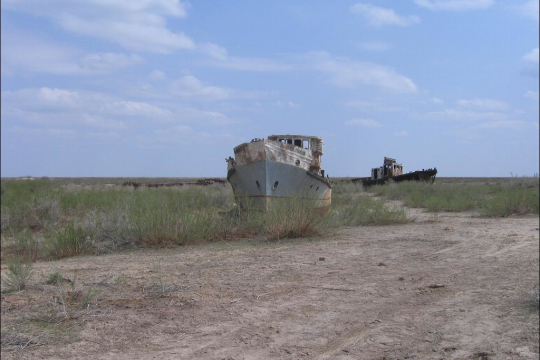EfD researcher and WinEED member Etenesh Asfaw, based in Moldavia, has led a study applying a battery of OECD indicators of green growth of Uzbekistan’s economy. She explained the main findings and the challenges of monitoring Uzbekistan’s green growth plans.
According to the World Bank, Uzbekistan aims to climb to the rank of upper-middle-income countries and to foster sustainable economic development, education, healthcare, and social protection systems according to international standards. In 2022, the country defined its green growth strategy framework program and action plan to transition to a green economy in 2030.
Etenesh Asfaw led a group of researchers to elaborate on the first report on the green economy transition of Uzbekistan using the OECD green growth indicators. This battery of 26 indicators was originally defined for OECD’s country members, but non-member countries have used it to track their progress in green growth as well. The indicators have several purposes: to allow countries to compare their progress with other countries, to provide information to policymakers to make informed decisions, and to show accountability and commitment to stakeholders by collecting and presenting information. This exercise of monitoring and communicating results also helps raise awareness of the public on what green growth is, and the relationship between the public’s quality of life and economic growth.
Results show a diverse picture
In Uzbekistan, CO2 emissions have shown an increasing trend since early 2000. However, the country is a minor contributor to global carbon emissions. Its global emissions share is 0.33% over the last three decades. The energy sector is the main emitter with 79% of emissions from burning natural gas for electricity and heat.
Forest cover in Uzbekistan has increased between 2014 and 2020 from 9 million hectares to 12 million hectares, representing 8,7% of the total land area in 2020. However, this coverage is below the level of Europe and Central Asia (38,5%) and the global average (31,2%).
In terms of freshwater, the pressure on this resource has increased over the years, from 54 billion m3 in 1995 to 59 billion m3 in 2019, making Uzbekistan among the most water-stressed countries globally. This high water usage is related to agricultural activities, particularly in the cotton and wheat sectors.
The greatest health problem is air pollution by particular matter (PM). In 2022, Uzbekistan occupied the 22nd place worldwide with the worst air quality measured as average concentration of PM2,5.
The desertification of the Aral Sea and dust storms are the main causes of air pollution. In the case of the capital city, Tashkent, air pollution comes mainly from vehicles.
Uzbekistan subsidizes electricity generation from natural gas and fossil fuels. However, these subsidies have diminished in the decade of 2010 – 2020. By 2020, the fuel subsidies were 60% of the 2010 level. In the strategy for 2030, the energy sector plans to diminish the subsidies and increase the incentives for investments in renewable energy sources.
Overlapping monitoring systems pose challenges
The results of the report were discussed in an event with national and international stakeholders such as delegates from the OECD, World Bank, UNDP, GIZ, the Ministry of Ecology and Water, representatives of the energy sector, and the Minister of Finance.
Currently, Uzbekistan has three frameworks to monitor green growth actions and policies: a monitoring system for 16 national Sustainable Development Goals (SDGs) including 125 indicators (established in 2018 and recalibrated in 2022), the green growth monitoring framework, consisting of eight indicators, and the OECD green growth indicators.
“We found that the three frameworks – the SGDs, the eight indicators of GGSF, and the OECD green growth indicators – partially overlap when they should complement each other,” says Etenesh Asfaw.
Managing monitoring systems poses several challenges for developing countries
“We found that data measurement is not harmonized or consistent with international standards. We also found that data sharing was one of the biggest issues because we were expecting to find the data in one place. The institutions gave us what they had, but many data were spread among institutions and there were gaps in the data collection. For example, the Ministry of Water resource did not have recent data in the last 5 years, so we had to use data from the World Bank database” adds Etenesh Asfaw.
Overlapping monitoring systems, data fragmentation and lack of data consistency make tracking progress and receiving international resources to support the plans difficult.
Etenesh Asfaw comments that “one recommendation we gave the government of Uzbekistan was to centralize the data collection and harmonize it with international standards. International donors become concerned when data is fragmented and not standardized because the accountability of actions is not clear”.
References:
The report “Greening the Economy in Uzbekistan: State of Play in 2023. Monitoring progress based on the OECD Green Growth Indicators” can be read here:
https://search.oecd.org/countries/uzbekistan/final-event-green-growth-indicators-uzbekistan.htm
Overview of Uzbekistan from World Bank:
https://www.worldbank.org/en/country/uzbekistan/overview
By: Manuela Fonseca (Comm officer for WinEED and EfD Colombia)
